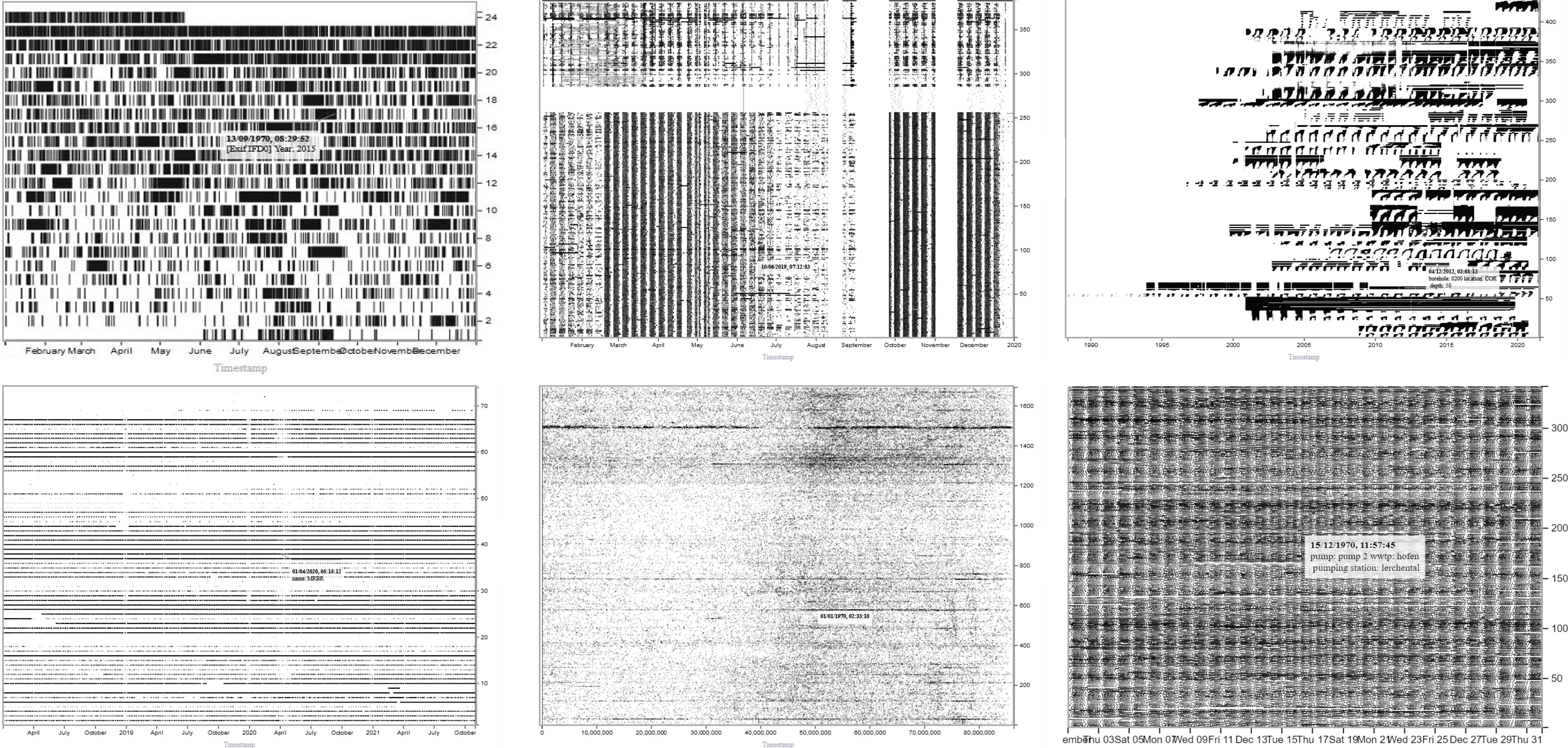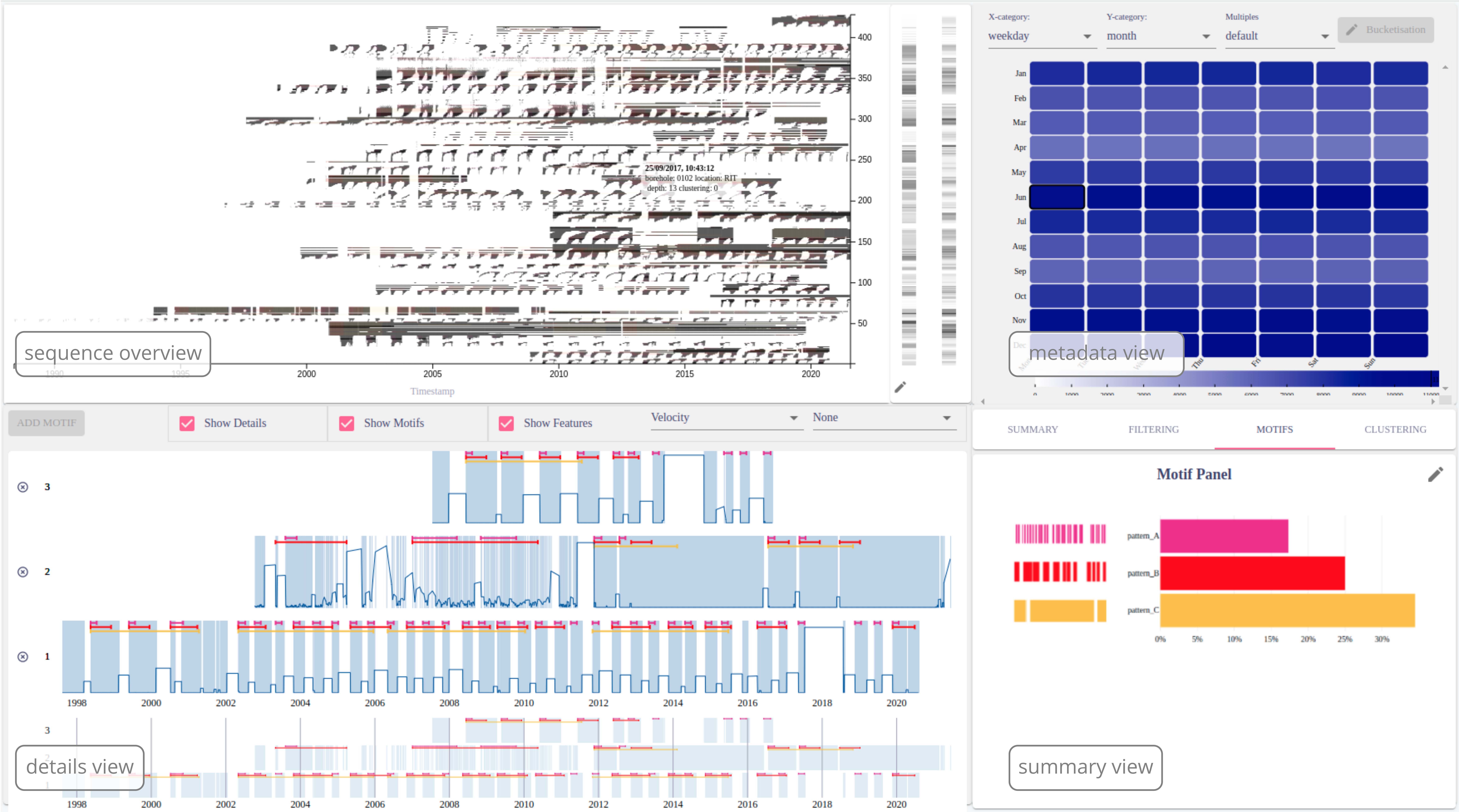Visual Analysis of Event Sequences
Event Sequences
Event sequences are series of discrete event categories, occurring over time. The analysis of event sequences is crucial across many domains, offering profound insights that drive predictive analytics, enhance personalized experiences, and improve decision-making processes. By uncovering patterns in sequences of categorical events, this analysis can lead to better healthcare outcomes through tailored treatments, more effective public health strategies, sophisticated fraud detection in finance, and customized content recommendations in digital platforms. Consequently, it not only boosts operational efficiency and safety in various sectors but also significantly enriches the quality of everyday life, demonstrating its indispensable role in navigating complex data landscapes and fostering advancements in technology and services.
Time-Stamped Event Sequences

Characterization
Research of the IVDA group focuses on time-stamped event sequences (TSEQ), which contain events with time information only, but without any value information, which is a fresh direction in the analysis of time-oriented data. The absence of values per timestamp is the main difference compared to time-oriented (time-dependent) data such as time series (numerical values) and classical event sequences (categorical values). The insights users gain from TSEQs are derived only from the event occurrences within sequences, i.e., the temporal characteristics, event behaviors and motif patterns are at the center of the analytical focus. Conversely, when dealing with other types of time-oriented data, the focus is placed on analyzing data values and the changes in these values over time.
Analysis Challenges
Time-stamped event sequences (TSEQs) are time-oriented data without value information, shifting the focus of users to the exploration of temporal event occurrences. TSEQs exist in application domains, such as sleeping behavior, earthquake aftershocks, and stock market crashes. Domain experts face four challenges, for which they could use interactive and visual data analysis methods. First, TSEQs can be large with respect to both the number of sequences and events, often leading to millions of events. Second, domain experts need validated metrics and features to identify interesting patterns. Third, after identifying interesting patterns, domain
experts contextualize the patterns to foster sense making. Finally, domain experts seek to reduce data complexity by data simplification and machine learning support.

Our IVDA approach provides overview visualizations, e.g., for the six datasets and cases used throughout our data-first design study, representing six different application domains and involved experts with data of considerable heterogeneity. From top left to bottom right, the cases we studied are 1) Digital Photography, 2) Host Behavior in a Computer Network, 3) Permafrost Observations, 4) Radiological Examinations, 5) Stock Market Tweets, and 6) Waste Water Treatment Activity. The time-stamped event sequences span across the horizontal time axis, and sorting by different metrics eases the visual comparison of hundreds or possibly thousands of sequences with up to 1,000,000 events.
[Article] IVESA – Visual Analysis of Time-Stamped Event Sequences

We present IVESA, a visual analytics approach for TSEQs. IVESA supports the analysis of TSEQs at the granularities of sequences and events, supported with metrics and feature analysis tools. IVESA has multiple linked views that support overview, sort+filter, comparison, details-on-demand, and metadata relation-seeking tasks, as well as data simplification through feature analysis, interactive clustering, filtering, and motif detection and simplification. We evaluated IVESA with three case studies and a user study with six domain experts working with six different datasets and applications. Results demonstrate the usability and generalizability of IVESA across applications and cases that had up to 1,000,000 events.
Materials and Bibliographic Data
- Publisher: IEEE TVCG
- Paper: pdf (PDF, 1 MB)
- Other Materials: Video
|
|
|
|
|
|
|





